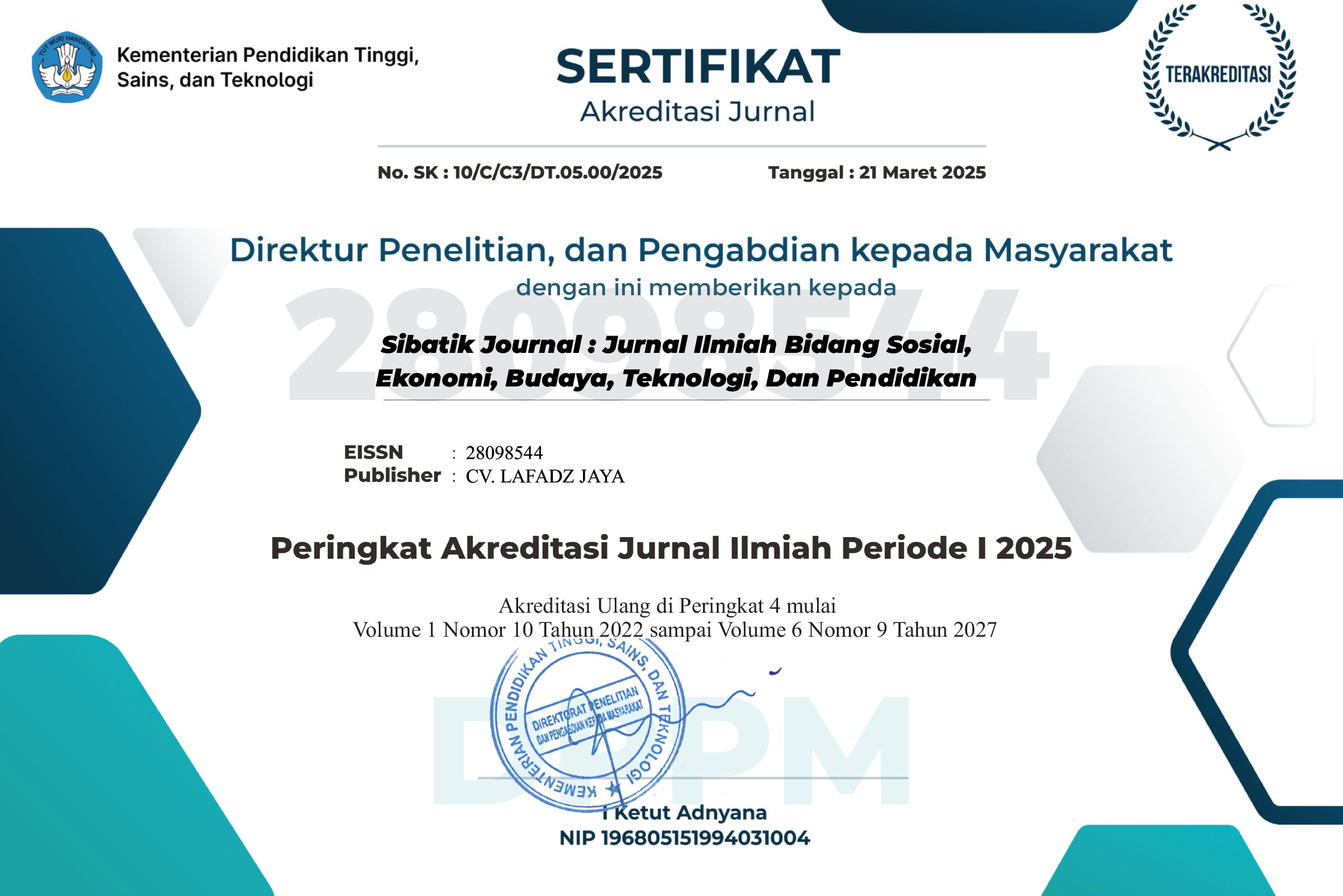TAMAN ENERGI TERPADU DALAM MEWUJUDKAN KEMANDIRIAN ENERGI DAN PANGAN DESA
Main Article Content
Rivilyo Mangolat Rizky Sitanggang
Yanif Dwi Kuntjoro
Athalia Christina
Annisa Nur Azizah
I Putu Aditya Brama Putra Cakra Negara
The development of Renewable Energy Technologies (EBT) has become a new focus in energy technology development. The advancement of EBT technology aligns with the increasing share of renewable energy, which has grown by 2% from 2017 to 2020. From an energy resilience perspective, EBT technology development can also be a solution for the energy crisis in Remote, Rural, and Undeveloped areas (3T). The rural lifestyle dominated by farming and livestock as livelihoods lacks proper waste management. Limited waste management processes, including the burning of crop residues and livestock waste in empty fields, can lead to pollution and diseases. From a Natural Resource perspective, properly processed agricultural and livestock waste, with the support of Human Resources and appropriate infrastructure, can turn into valuable resources for daily life in rural areas. Supporting clean agricultural and livestock waste management, integrated biogas reactors with green spaces such as plantations, hydroponics, and fish ponds can be a solution to achieving clean waste management while simultaneously ensuring food and energy security. Using quantitative methods, including field testing and direct measurement, the input-output percentages of different waste types and the potential of the Integrated Energy Park in supplying energy and food for the village can be calculated.
Azhar, M., & Satriawan, D. A. (2018). Implementasi kebijakan energi baru dan energi terbarukan dalam rangka ketahanan energi nasional. Administrative Law and Governance Journal, 1(4), 398-412.
APPI (2022). Fertilizer Consumption on Domestic Market and Export Market, year 2017 – 2022
A. Lamading, H. . (2022). Membangun Mindset Entrepreneurship Di Era Digital Pada Masyarakat Labuan. Sibatik Journal: Jurnal Ilmiah Bidang Sosial, Ekonomi, Budaya, Teknologi, Dan Pendidikan, 1(12), 2761–2766. https://doi.org/10.54443/sibatik.v1i12.428
Bank Indonesia (2022). Statistik Ekonomi Keuangan Indonesia. 2022. Bank Indonesia
Badan Pengkajian dan Penerapan Teknologi (2020). Dampak Pandemi COVID-19 terhadap Sektor Energi di Indonesia.
Badan Pusat Statistik (2018). Indeks Pembangunan Desa 2018. Badan Pusat Statistik. https://www.bps.go.id/indikator/indikator/view_data/0000/data/1231/sdgs_10/1
Badan Pusat Statistik (2021). Populasi Hewan Ternak (ekor), 2019-2021. Badan Pusat Statistik. https://jabar.bps.go.id/indicator/158/255/1/populasi-hewan-ternak-.html
Badan Pusat Statistik (2021). Populasi Sapi Perah menurut Provinsi (Ekor), 2019-2021. Badan Pusat Statistik. https://www.bps.go.id/indicator/24/470/1/populasi-sapi-perah-menurut-provinsi.html
Badan Pusat Statistik (2021). Populasi Sapi Potong menurut Provinsi (Ekor), 2019-2021. Badan Pusat Statistik. Badan Pusat Statistik (2021). Statistik Indonesia 2021. Jakarta: Badan Pusat Statistik.
Herminingsih, D. I., & Isro’iyah, L. (2023). Helping the Students to Navigate the Cultures of Others through Literature: The Teaching Practice to the Students of English Study Program in UIN SATU. ELITE JOURNAL, 5(1), 33-42.
Hidayati, Y. A., Santoso, M. D., & Putra, A. D. (2020). Biogas Production from Livestock Manure in Indonesia: Current Status and Future Prospects. Journal of Physics: Conference Series, 1440(1), 012091. doi: 10.1088/1742-6596/1440/1/012091.
Manuho, P., Makalare, Z., Mamangkey, T., & Budiarso, N. S. (2021). Analisis Break Even Point (BEP). Jurnal Ipteks Akuntansi Bagi Masyarakat, 5(1), 21-28.
Peraturan Presiden Nomor 5 Tahun 2006 Tentang Kebijakan Energi Nasional.
Prasetya, B., Sari, S. A., Prasetyo, L. B., & Kusuma, A. M. (2020). Assessment of Water Quality and Pollution in Citarum River, West Java, Indonesia. IOP Conference Series: Earth and Environmental Science, 495, 012096. https://doi.org/10.1088/1755-1315/495/1/012096
PYC (2022). Global Renewable Energy Production per continent. Purnomo Yusgiantoro Center. https://datacenter-pyc.org/data/statistics/new-and-renewable-energy/global-renewable-energy-production-per-continent/
Ridani, Y. ., & Ardansyah, A. (2022). Analisis Strategi Pengembangan Wisata Air Terjun Curup Jepun Desa Negeri Baru Way Kanan. Sibatik Journal: Jurnal Ilmiah Bidang Sosial, Ekonomi, Budaya, Teknologi, Dan Pendidikan, 1(6), 879–886. https://doi.org/10.54443/sibatik.v1i6.103
Sukmana, R. W. & Muljatiningrum, A. (2023). Biogas dari limbah ternak. Nuansa Cendekia.
Sumarno, S., Kusuma, I. W., & Handayani, W. (2021). Peran BUMDES dalam Pemberdayaan Sumber Daya Alam Lokal di Pedesaan. Jurnal Ilmu Sosial dan Humaniora, 10(1), 43-53.

























